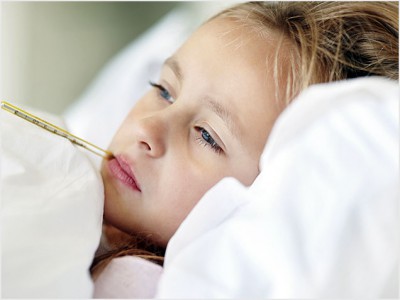 A fever is an elevation in a person’s body temperature and actually it can be any temperature above which is considered normal (98.6 Fahrenheit/37 Celsius for an oral measurement or 99 Fahrenheit/37.2 Celsius for a rectal one). Keep in mind that those numbers are average and a person’s normal body temperature can vary by one degree Fahrenheit (0.6 Celsius) in either direction. Fevers are common indications of illness, but they are sometimes necessary for fighting infections. It becomes serious if the fever goes over 104 Fahrenheit (40 Celsius).
A fever is an elevation in a person’s body temperature and actually it can be any temperature above which is considered normal (98.6 Fahrenheit/37 Celsius for an oral measurement or 99 Fahrenheit/37.2 Celsius for a rectal one). Keep in mind that those numbers are average and a person’s normal body temperature can vary by one degree Fahrenheit (0.6 Celsius) in either direction. Fevers are common indications of illness, but they are sometimes necessary for fighting infections. It becomes serious if the fever goes over 104 Fahrenheit (40 Celsius).
How to Treat a Fever: Medications
Generally speaking, fevers don’t need to be treated unless they cause discomfort. You don’t need to wake up a child or adult to treat their fever unless a doctor says to do so.
1. OTC Medications
- Acetaminophen. This includes Tylenol. Ask your doctor about the correct dosage for children. Adults without health problems like liver disease can have two “extra strength” tablets (1,000 mg) each six hours.
- Ibuprofen.It should only be used for those over six months old. Adults can take 400 to 600 mg each six hours, generally this is two or three tablets.
- Aspirin (adult only). You should never use aspirin to treat viral illnesses for children or adolescents as doing so is linked to Reye’s syndrome, a dangerous illness leading to prolonged confusion, vomiting and possible liver failure or coma.
2. Prescription Medications
Based on the fever’s cause, a doctor may give a prescription for antibiotics, particularly in the case of bacterial infections like strep throat or pneumonia.Antibiotics will not treat viral infections and there are not main antiviral drugs for particular infections.
How to Treat a Fever: Home Remedies
1. Drink Plenty of Water
Fever leads to dehydration through fluid loss, so you should be sure to drink water, broth or juices. If your child is less than a year old, give him oral rehydration solutions which contain a combination of water and salts, helping restore electrolytes and fluid. You can try Pedialyte or Pedialyte ice pops.
2. Get Enough Rest
Your body will need energy in order to fight the sickness and heal itself. Minimize activity and sleep or rest as much as you can. Keep moving around to a minimum and consider taking time off school or work.
3. Use a Wet Towel
If you don’t feel like taking a bath, you can utilize a moist towel. Soak several small towels using cool water, dabbing them on your body. The evaporation will help you cool down. Placing a cloth on top of your forehead will also help soothe the discomfort.
4. Dress Lightly
The more surface area of your body that is exposed, the more opportunity your sweat glands have to release moisture, which will make your comfort. Put infants in just a diaper, and for older children and adults, optfor underwear and a thin undershirt.
5. Take a Bath
A good way to treat and relieve your fever is to take a cool bath. Simply fill your bathtub and lay down in it for about five minutes, repeating as many times as you need to.
6. Eat Less
When fighting infections, the body won't welcome zinc, iron, and other specific nutrients because they aid in the growth of the infectious organism. That means that eating a lot and taking supplements can actually cause the infection to worsen.
7. Stay at Home
You should ideally curl up to rest inside as the temperature will be consistent and the air will be dry. If you have to go outside with a fever, avoid activity and stick to the shade.
8. Use Egg Whites
Egg whites can draw infection and fever from your body. You can soak socks in some egg whites before putting them on. Another option is to put the egg whites on paper towels before placing them on the soles of your feet. Your fever should drop within 10 minutes or an hour. You can also try a potato instead of egg whites.
9. Try Herbs
- Yarrow. Having yarrow tea will open your pores, triggering sweating that can help end a fever. Just steep a tablespoon of yarrow in boiling water for about ten minutes. Let it cool and then have a cup or several until you begin sweating.
- Elderflower. Elderflower also encourages sweating and can also help with other symptoms of colds and flus like mucus overproduction. Steep two teaspoons of elderflower in boiled water for fifteen minutes before drinking. Have this three times daily while you have a fever.
- Basil leaves. Basil leaves will reduce your body’s heat. Simply boil a few leaves in some water, and then drink it. You can also add a bit of honey for flavor, but don’t add sugar.
- Sage and lemon balm. A tea made with several leaves of lemon balm and sage can also help you start sweating and lower the fever. You can also put some sage leaves in a mug with boiling water, letting it steep for ten minutes. Add honey and a tablespoon lemon juice.
The video below introducesmore natural ways to reduce a fever: